About our CPD Resources
For the last few years, all of these have been publicly available, but from now on - as previously announced - access to most of the resources is restricted to subscribers/members of the site.It is free to register for the site, and it only takes a minute - all you need to do is give your name and email, and you will receive a confirmation email. As a member of the site you will then receive occasional newsletter updates, never more than 6 per year (usually it’s about 4).
Once you have registered, every time you want to access any of the resources, all you need to do is log-in to the site, using the log-in link in the top right corner of each page. You are welcome to use and distribute these materials, including for your own teaching, as long as you reference them and observe the copyright, by keeping copyright details visible.

How ‘the Wound’ Enters the Consulting Room (2006)
This article charts the deconstruction of the 'medical model' (which was taken for granted as a basic paradigm for the work of psychoanalysis by Freud at the conception of our profession) over the 100 years since then. It starts from [...]

Potentials and Pathologies of Character Structure Theory (EABP 2006)
Character Structure theory is a central aspect of Reichian and neo-Reichian Body Psychotherapy, and its underlying holistic 'functionalism' has stood the test of time. In its expanded and integrated form, as presented by Stephen Johnson ("Character Styles", 1994), it provides [...]
On BodyMind Process (2006)
Some preparatory thoughts on an embodied whole-person approach: if we want to work with the whole spectrum of processes from unconscious to conscious, from spontaneous to reflective, from somatic to emotional, mental and psychological, we recognise that in its traditional [...]
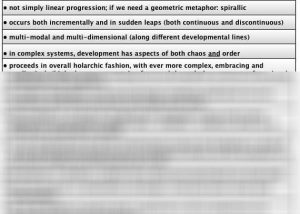
An Integral Perspective on ‘Development’ (2005)
This handout is extracted from my chapter 'From humanistic holism via the ‘integrative project’ towards integral-relational Body Psychotherapy'. Written in 2005, it summarises some basic assumptions regarding development, blending Body Psychotherapy and Wilber's evolutionary theories. To gain access to the [...]
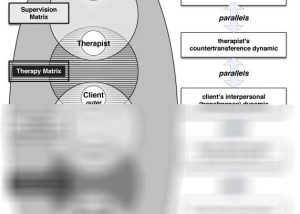
Soth – Extended Model of Parallel Process (2005)
This handout summarises the way I have extended the model of 'parallel process', so to speak: backwards: into the client's inner world, into the client's bodymind process, and into the client's past relationship scenarios. This extends the well-established version of [...]
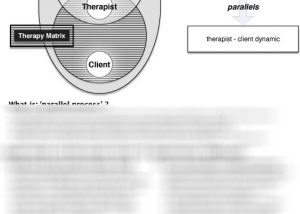
The Hawkins/Shohet Model of Parallel Process (2005)
This page is a summary of the key features and principles of the seminal Hawkins/Shohet model of 'parallel process'. Published first in the mid-80s under the title ""Supervision in the Helping Professions"", 'parallel process' became one of the key features [...]
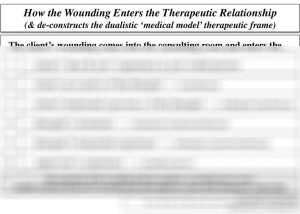
How the Wound Enters the Therapeutic Relationship (2005)
This table is a summary of the 6-and-a-half steps by which we can conceive of the late 19th century medical model frame of therapy having been deconstructed and broken down over the last 100 years. It is a summary of [...]

An up-to-date Synopsis of how Body Psychotherapy has Developed over the last Decade (2005)
This was written as a new Introduction to the Advanced Training programme of the Chiron Centre and later got turned into an article for 'Therapy Today'. To gain access to the full resource, please log-in if you are a [...]

How can Body Psychotherapy Help Apply the Insights of Neuroscience (2005)
This was written as part of the Introduction to the Advanced Training programme of the Chiron Centre in 2004, following the enthusiastic reception of modern neuroscience by psychological practitioners. It spells out a list of the therapeutic micro-skills involved in [...]

Current Body Psychotherapy – a Relational Approach for the 21st Century? (2005)
This article was written for the BACP Journal 'Therapy Today' to up-date the image of Body Psychotherapy across the professions of counselling and psychotherapy. By spelling out the - partly justified - prejudices against Body Psychotherapy deriving from 1970's practice, [...]
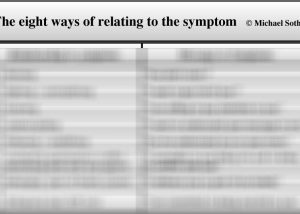
The 8 Kinds of Relationship to the Symptom (2005, simple)
This is the simplified version of a handout prepared for a presentation at a conference for therapists working in primary care, who were interested in bringing an embodied perspective to their patients. Later this became the basis for a regular [...]
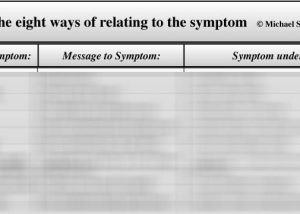
The 8 Kinds of Relationship to the Symptom (2005)
This handout was prepared for a presentation at a conference for therapists working in primary care, who were interested in bringing an embodied perspective to their patients. Later this became the basis for a regular CPD workshop I was running [...]

Psychotherapy: the ‘Relating Cure’ – Relating to the Psychosomatic Symptom (2005)
This article was written as a response to some interview questions by Penny Gray, the editor of the Healthcare Counselling & Psychotherapy Journal. It is primarily addressed to counsellors working in the NHS, but it also covers wider questions regarding [...]
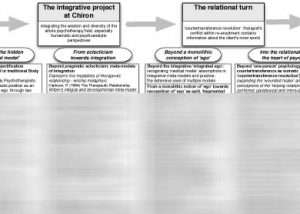
The Development of the Chiron Approach – Phases, Steps & Revisions (2005, very detailed)
This handout summarises all the graphics (plus a few more) which I put together for my chapter of the same title for the book "Contemporary Body Psychotherapy - the Chiron Approach" (edited by Linda Hartley), in which I charted my [...]
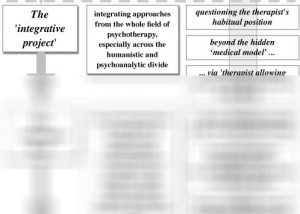
The Development of the Chiron Approach – Phases, Steps & Revisions (2005, simple)
This hand-out summarises all the graphics (plus a few more) which I put together for my chapter of the same title for the book ""Contemporary Body Psychotherapy - the Chiron Approach"" (edited by Linda Hartley), in which I charted my [...]
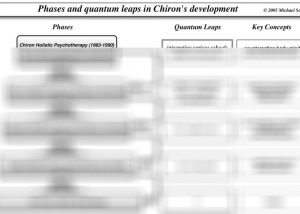
The Development of the Chiron Approach – Phases and Quantum Leaps (2005)
This handout illustrates and summarises the four main phases of Chiron's development between the early 1980s and 2005, offering some keywords for each. To gain access to the full resource, please log-in if you are a member already (and then [...]
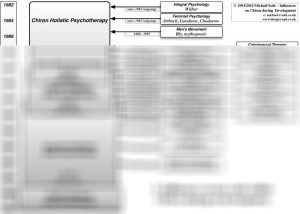
Influences on my Work within Chiron during its Development (2005, detailed)
This handout presents a detailed overview of the many influences I was both challenged and inspired by during the 25 years of Chiron's development. To gain access to the full resource, please log-in if you are a member already (and [...]
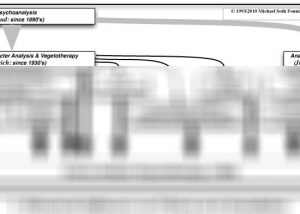
Influences on Chiron at its Foundation (2005)
This handout summarises the main influences on the Chiron approach at its inception in the early 1980s, when it started off under the title Holistic Psychotherapy. Chiron involved out of Biodynamic Psychology, and integrated all the main schools of Neo-Reichian [...]

Embodied Countertransference – some extracts (2004)
This chapter, published in Nick Totton's 2005 book "New Dimensions in Body Psychotherapy" is my first and quite condensed formulation of some of the original concepts arising from an integration of bodymind and relational perspectives (3 kinds of contact; the [...]
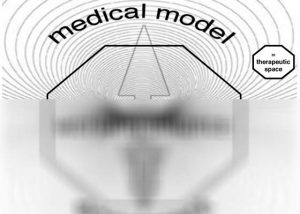
The Diamond Model of Modalities – The force field between medical model, working alliance, enactment (2004)
This handout presents the underlying force field and fundamental tension which the therapeutic endeavour operates within. Historically, and in the public (mis-)perception, therapy is seen as equivalent with 'medical model' treatment, i.e. symptom reduction through the therapist operating as a [...]

What Therapeutic Hope for a Subjective Mind in an Objectified Body? (2004, long version)
This is the edited and elaborated text of my presentation at the UKCP Conference 'About A Body' which was eventually published in three versions: one published by UKCP in 2006 (9000 words) and one published in two parts in the [...]
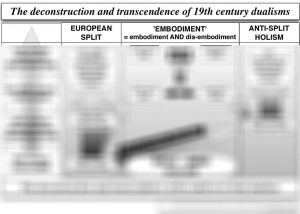
The Deconstruction and Transcendence of the BodyMind Dualism (2014)
This handout, adapted from and similar to The 'Birth Trauma' of Psychotherapy and the Deconstruction and Transcendence of 19th-century Dualisms (2004), spells out a little bit more the split between the 'talking therapy' approaches and the embodiment approaches, and their [...]
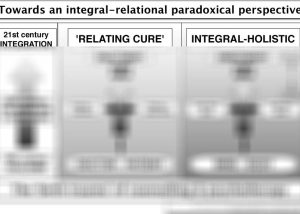
The ‘Birth Trauma’ of Psychotherapy and the Deconstruction and Transcendence of 19th-century Dualisms (2004)
This dense and abstract handout, consisting of several pages, summarises the evolution of the field of psychotherapy since its origins in Freud's zeitgeist of the late 19th century. I am picking out two main dualisms: the doctor-patient relationship and the [...]
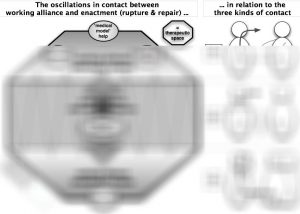
The Diamond Model of Modalities – Oscillations (2004)
My 'Diamond Model of the Modalities', based on Clarkson's modalities of the therapeutic relationship, uses my extended version of the modalities by including 'medical model'-relating. This model is designed to transform what are usually understood as sequential treatment options into [...]
